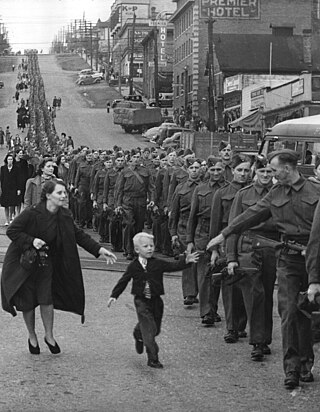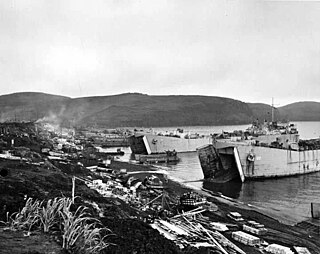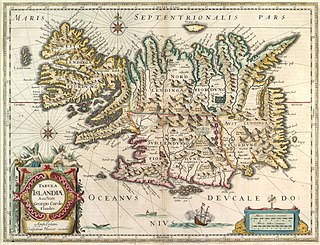Related Research Articles

William Lyon Mackenzie King was a Canadian statesman and politician who served as the tenth prime minister of Canada for three non-consecutive terms from 1921 to 1926, 1926 to 1930, and 1935 to 1948. A Liberal, he was the dominant politician in Canada from the early 1920s to the late 1940s. King is best known for his leadership of Canada throughout the Great Depression and the Second World War. He played a major role in laying the foundations of the Canadian welfare state and established Canada's international reputation as a middle power fully committed to world order. With a total of 21 years and 154 days in office, he remains the longest-serving prime minister in Canadian history.
A neutral country is a state that is neutral towards belligerents in a specific war or holds itself as permanently neutral in all future conflicts. As a type of non-combatant status, nationals of neutral countries enjoy protection under the law of war from belligerent actions to a greater extent than other non-combatants such as enemy civilians and prisoners of war. Different countries interpret their neutrality differently: some, such as Costa Rica, have demilitarized, while Switzerland holds to "armed neutrality", to deter aggression with a sizeable military, while barring itself from foreign deployment.

War Plan Red, also known as the Atlantic Strategic War Plan, was one of the color-coded war plans created by the United States Department of War during the interwar period of 1919–1939, covering scenarios related to a hypothetical war with the British Empire. Many different war plans were prepared by mid-level officers primarily as training exercises in how to calculate the logistical and manpower requirements of fighting a war, and War Plan Red outlined those steps necessary to defend against any attempted invasion of the United States by British forces. It further discussed fighting a two-front war with both Japan and Great Britain simultaneously.
The Conscription Crisis of 1944 was a political and military crisis following the introduction of forced military service for men in Canada during World War II. It was similar to the Conscription Crisis of 1917, but not as politically damaging.
David Jay Bercuson is a Canadian labour, military, and political historian.
The Emergency was a state of emergency in Ireland in the Second World War, throughout which most of Ireland remained neutral. It was proclaimed by Dáil Éireann on 2 September 1939, allowing the passage of the Emergency Powers Act 1939 by the Oireachtas the following day. This gave sweeping powers to the government, including internment, censorship of the press and correspondence, and control of the economy. The Emergency Powers Act lapsed on 2 September 1946, although the Emergency was not formally ended until 1976.
Ireland has been neutral in international relations since the 1930s. The nature of Irish neutrality has varied over time, and has been contested since the 1970s. Historically, the state was a "non-belligerent" in the Second World War and has never joined NATO, although during the Cold War it was anti-communist and aloof from the Non-Aligned Movement. The compatibility of neutrality with Ireland's membership of the European Union has been a point of debate in EU treaty referendum campaigns since the 1990s. The Seville Declarations on the Treaty of Nice acknowledge Ireland's "traditional policy of military neutrality", reflecting the narrow formulation of successive Irish governments. Others define Irish neutrality more broadly, as having "a strong normative focus, with a commitment to development, United Nations peacekeeping, human rights and disarmament".

General Henry Duncan Graham Crerar was a senior officer of the Canadian Army who became the country's senior field commander in the Second World War as commander of the First Canadian Army in the campaign in North West Europe in 1944–1945. A graduate of the Royal Military College of Canada, in Kingston, Ontario, Crerar was commissioned as a lieutenant in the Non-Permanent Active Militia in 1909, serving with the 4th Battery, Canadian Field Artillery, which was based in Hamilton, Ontario. He rose to the rank of lieutenant-colonel in the artillery in the First World War, during which he was mentioned in despatches and made a member of the Distinguished Service Order (DSO). Electing to remain in the army as a professional soldier after the war, he attended the Staff College, Camberley, from 1923 to 1924, and the Imperial Defence College in 1934. He was appointed Director of Military Operations & Military Intelligence in 1935 and Commandant of the Royal Military College of Canada in 1939.

During the World Wars and Interwar Years, 1914–1947, Canada experienced economic gain, more freedom for women, and new technological advancements. There were severe political tensions over issues of war and ethnicity, and heavy military casualties. The Great Depression hit Canada hard, especially in export-oriented mining and farming communities, and in urban factory districts.

Operation Cottage was a tactical maneuver which completed the Aleutian Islands campaign. On August 15, 1943, Allied military forces landed on Kiska Island, which had been occupied by Japanese forces since June 1942. The Japanese, however, had secretly abandoned the island two weeks earlier, and so the Allied landings were unopposed. Allied forces suffered over 313 casualties in total during the operation, due to Japanese landmines and booby traps, friendly fire incidents, and vehicle accidents.

The policy of Irish neutrality during World War II was adopted by the Oireachtas at the instigation of the Taoiseach Éamon de Valera upon the outbreak of World War II in Europe. It was maintained throughout the conflict, in spite of several German air raids by aircraft that missed their intended British targets, and attacks on Ireland's shipping fleet by Allies and Axis alike. While the possibilities of not only a German but also a British invasion were discussed in the Dáil, and either eventuality was prepared for, the most detailed preparations were done with the Allies under Plan W. De Valera's ruling party, Fianna Fáil, supported his neutral policy for the duration of the war.

The Valour and the Horror is a Canadian television documentary miniseries, which aired on CBC Television in 1992. The series investigated three significant Canadian battles from the Second World War and was a co-production between the CBC, the National Film Board of Canada (NFB) and Galafilm Inc. The films were also broadcast by Radio-Canada, the French network of the CBC. The series was written by Brian McKenna, an award-winning journalist and founding producer of The Fifth Estate and his brother, Terence McKenna, and was directed by Brian McKenna.

At the beginning of World War II, Iceland was a sovereign kingdom in personal union with Denmark, with King Christian X as head of state. Iceland officially remained neutral throughout World War II. However, the British invaded Iceland on 10 May 1940. On 7 July 1941, the defence of Iceland was transferred from Britain to the United States, which was still a neutral country until five months later. On 17 June 1944, Iceland dissolved its union with Denmark and the Danish monarchy and declared itself a republic, which remains to this day.
Canada has been a member of the North Atlantic Treaty Organization (NATO) since its inception in 1949.

Canada and the Federal Republic of Germany have positive relations, as they are close allies and fellow NATO and G7 members.

When the United Kingdom declared war on Nazi Germany in September 1939 at the start of World War II, the UK controlled to varying degrees numerous crown colonies, protectorates and India. It also maintained unique political ties to four of the five independent Dominions—Australia, Canada, South Africa, and New Zealand—as co-members of the then "British Commonwealth". In 1939 the British Empire and the Commonwealth together comprised a global power, with direct or de facto political and economic control of 25% of the world's population, and of 30% of its land mass.
The IJN North American Task Force was an Imperial Japanese Navy fleet. In accordance with the Anglo-Japanese Alliance, the fleet defended the West Coast of Canada as well as Allied shipping in the Pacific during World War I.

The military history of the Aleutian Islands began almost immediately following the purchase of Alaska from the Russian Empire by the United States in 1867. Prior to the early 20th century, the Aleutian Islands were essentially ignored by the United States Armed Forces, although the islands played a small role in the Bering Sea Arbitration when a number of British and American vessels were stationed at Unalaska to enforce the arbitrators' decision. By the early 20th century, a number of war strategies examined the possibility of conflict breaking out between the Empire of Japan and the United States. While the Aleutian Islands were seen as a potential staging point for invasions by either side, this possibility was dismissed owing to the islands' dismal climate. In 1922, the Washington Naval Treaty was signed, after which the United States Navy began to take an interest in the islands. However, nothing of significance was to materialize until World War II.
The diplomatic history of World War II includes the major foreign policies and interactions inside the opposing coalitions, the Allies of World War II and the Axis powers, between 1939 and 1945.
The foreign policies of Canada and its predecessor colonies were under British control until the 20th century. This included wars with the United States in 1775-1783 and 1812–1815. Economic ties with the U.S. were always close. Political tensions arose in the 19th century from anti-British feeling in the U.S. in the 1860s. Boundary issues caused diplomatic disputes resolved in the 1840s over the Maine boundary. and early 1900s, in the early 20th century over the Alaska boundary. There is ongoing discussion regarding the Arctic. Relations have been very friendly with the U.S. in the 20th and 21st centuries.
References
- ↑ David J. Bercuson and J.L. Granatstein, "Defence Scheme No. 2" in Dictionary of Canadian Military History (Canada: Oxford University Press, 1992), 61
- 1 2 3 J. L. Granatstein, Canada's Army: Waging War and Keeping the Peace (University of Toronto Press, 2004), 171. https://books.google.com/books?id=jqxyhNcha3sC&q=Canada%27s+Army&pg=PA171 (accessed January 19, 2009)
- ↑ Galen Roger Perras and Katrina E. Kellner, "’A perfectly logical and sensible thing’: Billy Mitchell Advocates a Canadian-American Aerial Alliance against Japan" The Journal of Military History, Volume 72, Number 3, July 2008. 816-817
- ↑ Perras, Roger "‘FUTURE PLAYS WILL DEPEND ON HOW THE NEXT ONE WORKS’: FRANKLIN ROOSEVELT AND THE CANADIAN LEGATION DISCUSSIONS OF JANUARY 1938" Journal of Military and Strategic Studies, Winter 2006/07, Vol. 9, Issue 2. 26-27